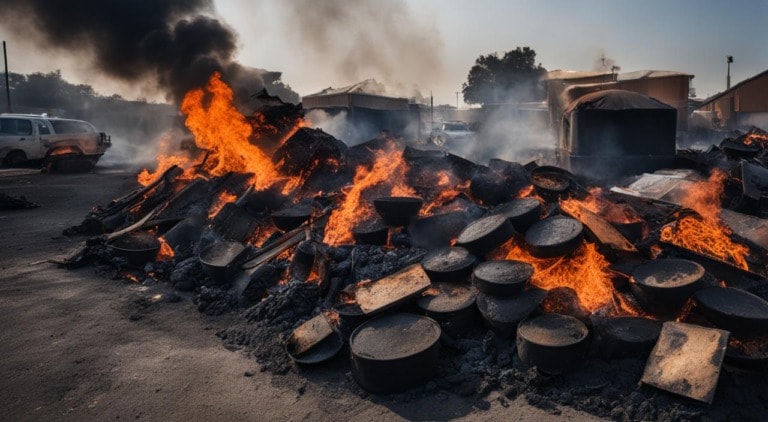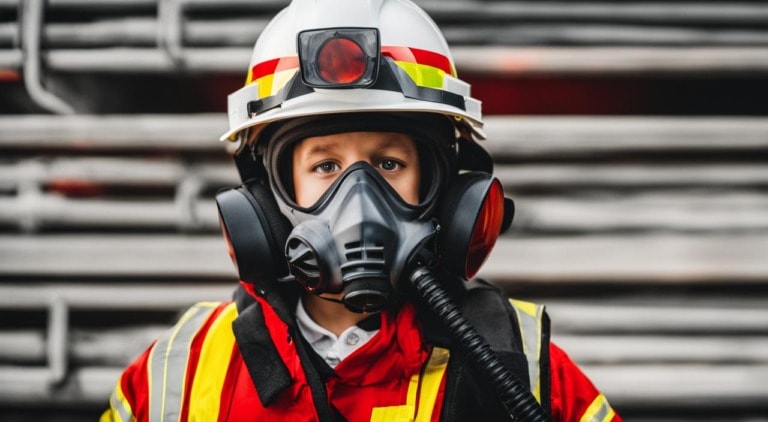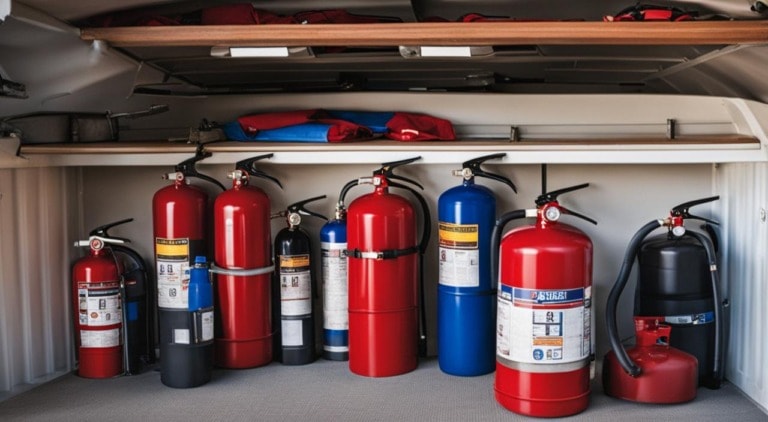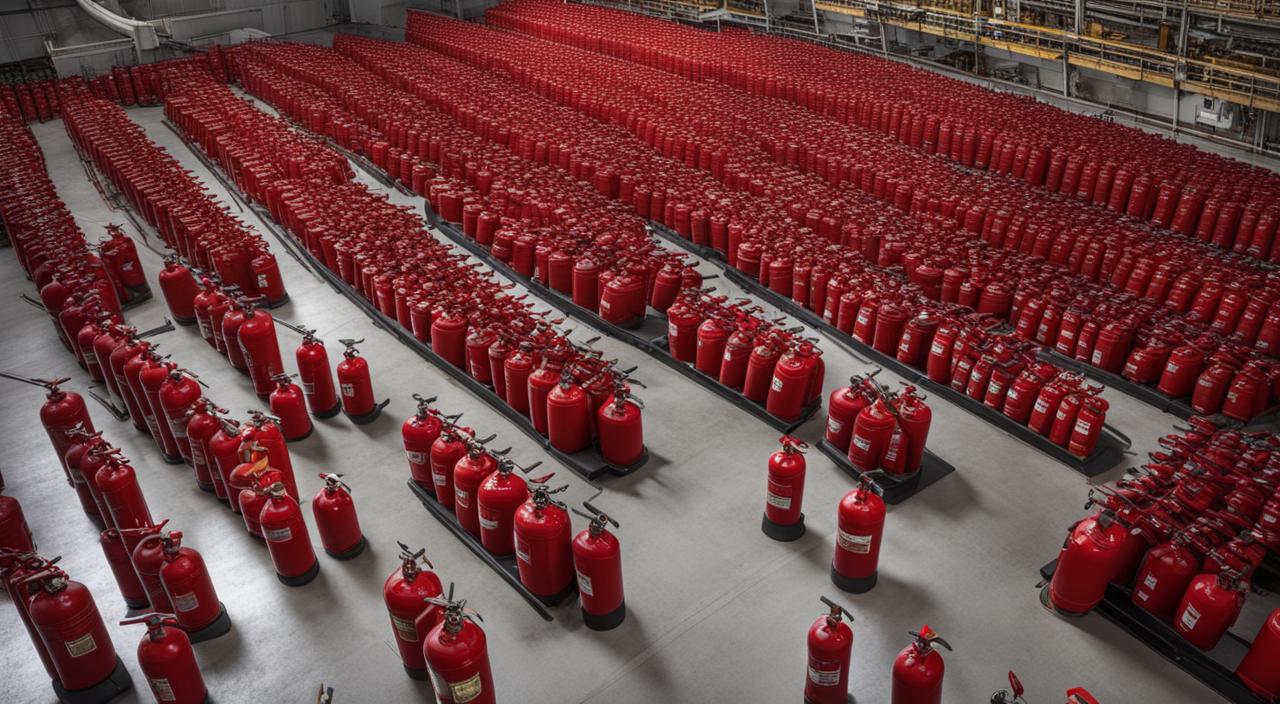
When it comes to commercial fire safety regulations, proper placement of fire extinguishers is crucial. The National Fire Protection Association (NFPA) sets guidelines to ensure the safety of employees and customers in public buildings. Understanding the maximum distance between fire extinguishers is essential for effective fire emergency response.
According to NFPA guidelines, the maximum distance between fire extinguishers in a commercial setting is determined by various factors. These factors include the size and layout of the building, as well as the hazards present. Every commercial building open to the public is required to have fire extinguishers available.
Accessibility and visibility are two key factors emphasized by the NFPA for fire extinguisher placement. Extinguishers should be easily accessible along normal paths of travel and free of visual obstructions. The height at which extinguishers should be mounted depends on their size, with specific regulations outlined by the NFPA.
In terms of spacing, the general guideline for Class A hazards is a travel distance of no more than 75 feet. For Class B hazards, the travel distance should not exceed 50 feet. However, these guidelines can vary based on factors such as building size, layout, and specific hazard classification.
Selecting the right type and size of fire extinguishers is also crucial for effective fire safety.
The NFPA categorizes fires into different classes and assigns hazard levels to public buildings based on the type of flammable materials present. Consulting a licensed fire protection company can provide expert guidance on the number, type, size, and proper placement of fire extinguishers in a commercial building.
Accessibility and Visibility Requirements for Fire Extinguishers
In order to ensure effective fire safety in a commercial setting, fire extinguishers must be easily accessible and visible. The National Fire Protection Association (NFPA) emphasizes the importance of these factors when it comes to locating and placing fire extinguishers.
According to the NFPA, fire extinguishers should be placed where they are readily accessible along normal paths of travel. This means that they should be positioned in areas that can be reached quickly in the event of a fire emergency. Additionally, fire extinguishers should be free of any visual obstructions to ensure easy identification and access.
The height at which fire extinguishers should be mounted also plays a crucial role in their accessibility. For extinguishers weighing more than 40 pounds, the top of the extinguisher should not be more than 3.5 feet from the ground. For extinguishers weighing less than 40 pounds, the top should not be more than 5 feet from the ground.
The bottom of the extinguisher must be at least 4 inches off the ground. If visual obstructions cannot be avoided, additional aids such as arrows, lights, or signs should be used to indicate the presence of fire extinguishers.
Spacing Guidelines for Fire Extinguishers
When it comes to ensuring fire safety in a commercial setting, proper spacing of fire extinguishers is crucial. The National Fire Protection Association (NFPA) provides guidelines to help determine the appropriate travel distance between fire extinguishers in different hazard situations.
These guidelines help ensure that employees can easily access a fire extinguisher in case of an emergency.
General Guidelines:
For Class A hazards, which include ordinary combustible materials, the general guideline is to have a travel distance of no more than 75 feet between fire extinguishers. This means that employees should be within 75 feet of a fire extinguisher at all times when Class A hazards are present.
For Class B hazards, which involve flammable liquids, the travel distance should be no more than 50 feet. It’s important to note that these are general guidelines and can vary based on factors such as the size and layout of the building, as well as the specific hazard classification.
Factors to Consider:
When determining the spacing of fire extinguishers, it’s essential to consider the size and layout of the building, as well as the specific hazard classification. Factors such as the fire rating of walls, the presence of sprinkler systems, and the location of exits can also impact the placement of fire extinguishers.
Following local fire codes and regulations, as well as consulting with a licensed fire protection company, can provide accurate guidelines for fire extinguisher spacing in a specific commercial setting.
Ensuring Accessibility:
In addition to spacing guidelines, it’s crucial to ensure that fire extinguishers are easily accessible. Extinguishers should be placed along normal paths of travel, making them readily available in case of a fire emergency. They should also be free of any obstructions that could hinder visibility or access.
If visual obstructions cannot be avoided, additional aids such as arrows, lights, or signs should be used to indicate the presence of fire extinguishers.
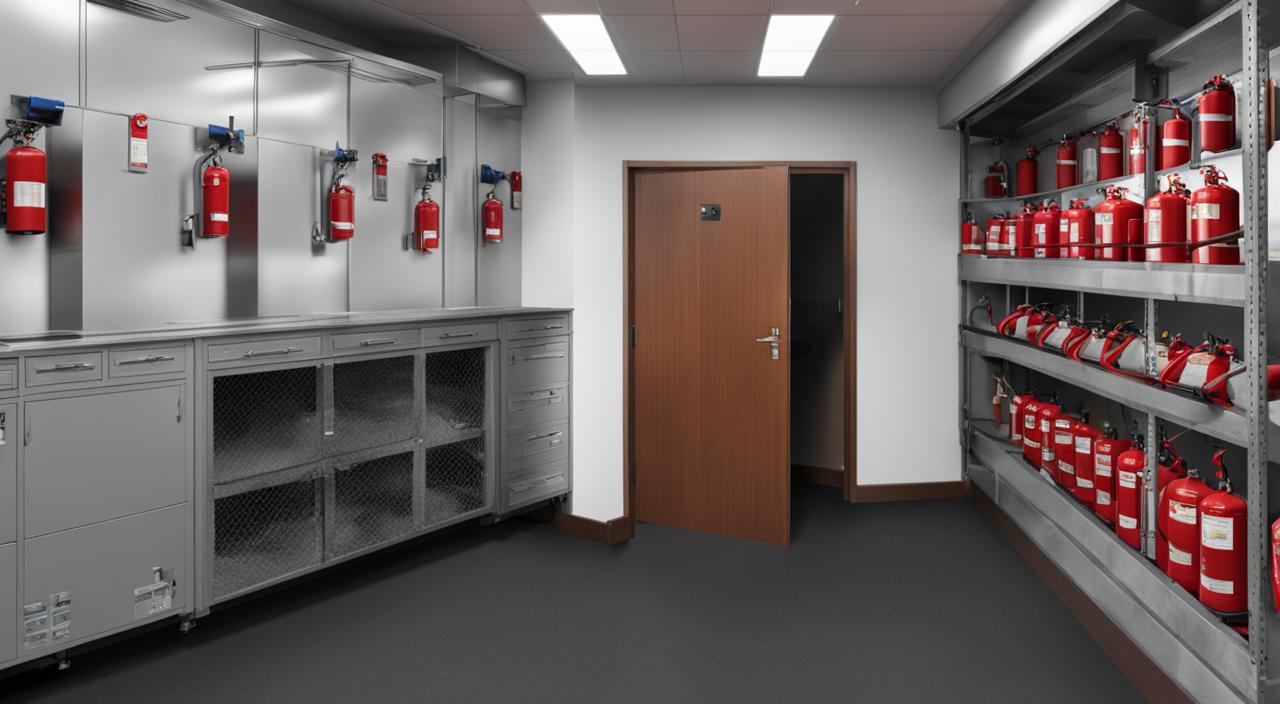
By following the NFPA guidelines and considering the specific factors of your commercial setting, you can ensure that fire extinguishers are appropriately spaced and easily accessible to protect the safety of employees and visitors in the event of a fire.
Selecting the Right Type and Size of Fire Extinguishers
Selecting the right type and size of fire extinguishers is essential for ensuring effective fire safety in a commercial setting.
The National Fire Protection Association (NFPA) classifies fires into different classes, including Class A, Class B, Class C, Class D, and Class K, based on the type of combustible materials involved. To effectively combat each class of fire, it is crucial to have the appropriate type of fire extinguisher on hand.
Additionally, the size of the fire extinguisher plays a vital role in its effectiveness. The size indicates the amount of fire extinguishing agent it can hold. It is important to choose fire extinguishers with sufficient agents to address a fire emergency within a specified space.
Factors such as the building layout and the specific hazard classification should be considered when determining the size.
Moreover, it is important to take into account the physical ability of employees to use the fire extinguishers. Providing proper training on how to operate fire extinguishers is crucial to ensure their effectiveness in emergency situations.
Consulting with a licensed fire protection company can provide expert guidance on selecting the right type, size, and classification of fire extinguishers for a specific commercial building, ensuring compliance with fire safety regulations and maximizing the safety of occupants.

